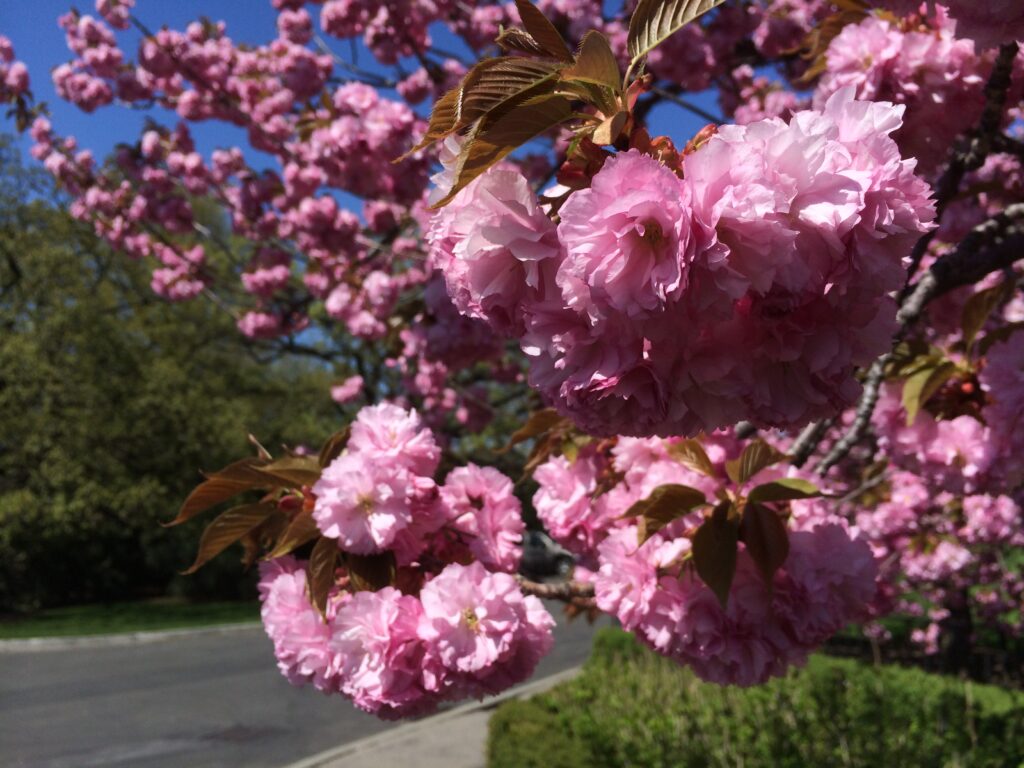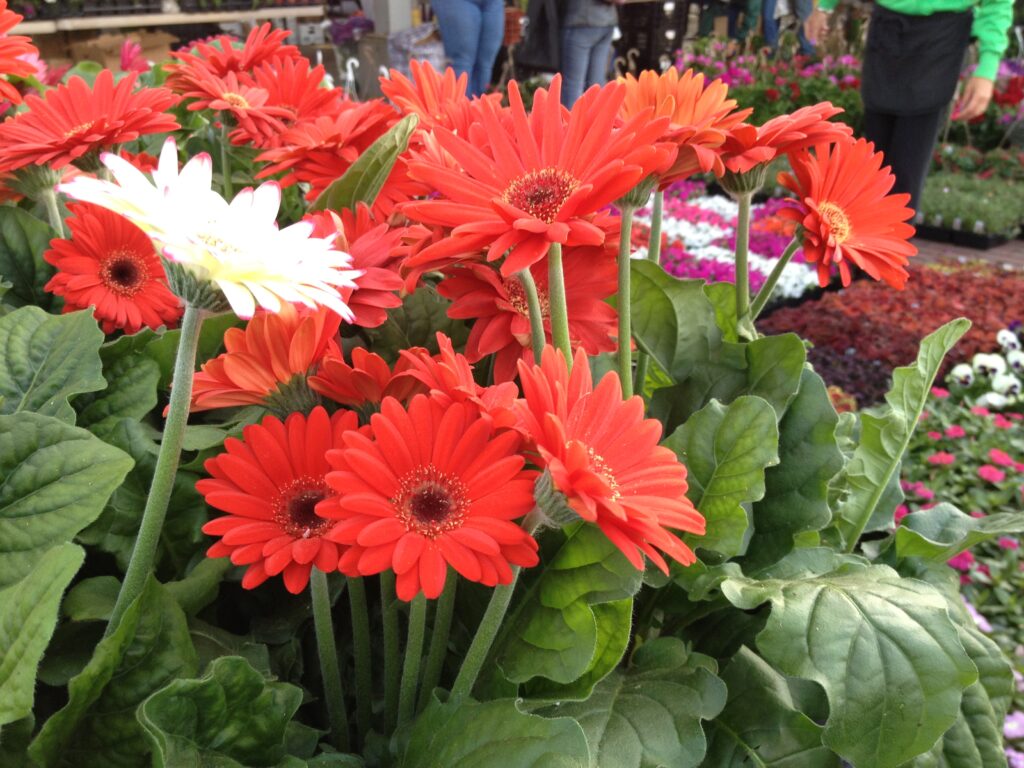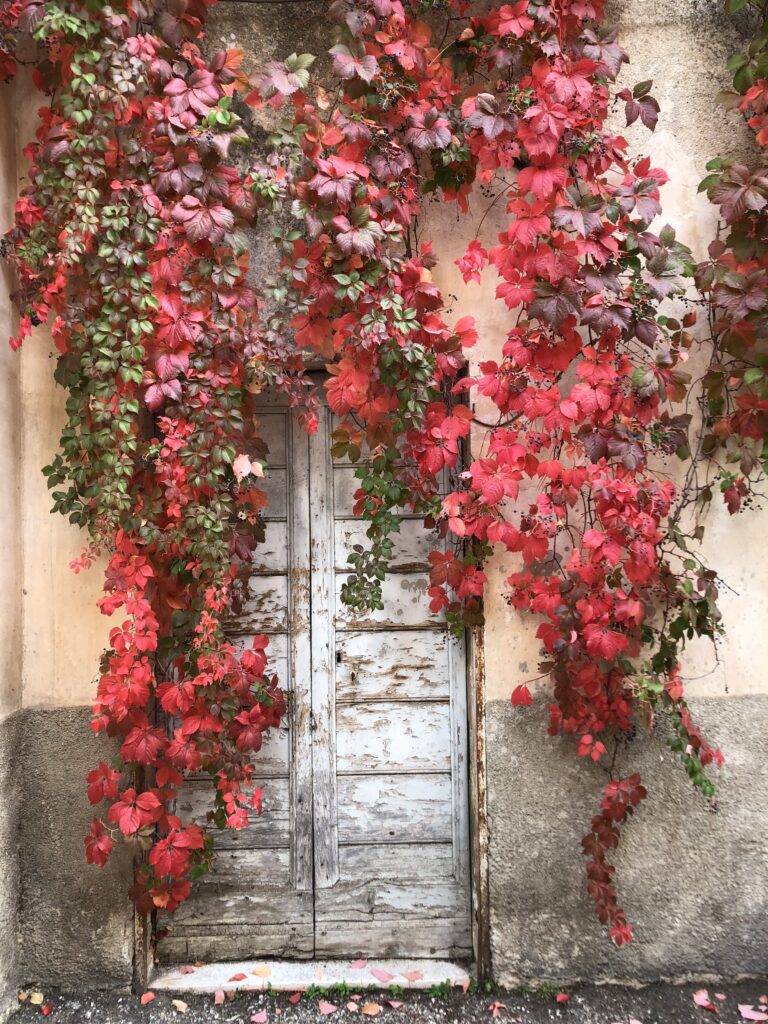
Images by Reynolds Kelly
JANUARY/FEBRUARY
Some people might think that in the cold winter months gardeners have nothing to do. But we garden-types all know that is far from the truth. Our gardens are always on our minds, even when they are covered with frost and snow. In fact, the cold dark months right after the new year is the perfect time to do a few crucial tasks.
– Planning: Grab your journal and start dreaming. What new designs are you envisioning come spring? Are there new flowers, vegetables, or other plants that you’d like to experience growing? January and February are great months to jot down your ideas and sketches, so that when spring comes you’re totally ready.
– Dig out last year’s seed packets and start organizing. Make note of what you have and what you would like to reorder, share, or discard. Make notes about when you should start planting. – Gather those garden and seed catalogs and make a list of seeds you’d like to order. You can even place many of those orders now, so that everything arrives before spring does.
– A few seeds can even be started inside. Some veggies and herbs, like broccoli, cabbage, parsley, rosemary, and several others can be started by the end of February. Your seed packets are your best guide.
-Prune shrubs that need to be shaped. Shrubs that bloom on new wood, like roses, can be pruned back in early spring. Shrubs that bloom on old wood should wait until shortly after blooming. This includes spring bloomers like forsythia and lilac. Check your property for Spotted Lanternfly eggs. The egg masses are one to two inches long and are a browinsh-tan color. Scrape them off of tree trunks and other surfaces into a bag with rubbing alcohol.
– Even if you gave all of your tools a good cleaning and sharpening in the fall, it is a good time to recheck them for rust and sharpness. Purchase new tools if needed.
– Inspect your seed-starting equipment. Disinfect seed trays and test grow lights.
– Now is the time to start many seeds indoors. To find the right time to start seeds, visit monroe.cce.cornell.edu (Gardening Factsheets) and almanac.com/gardening/planting-calendar. Refer back to your winter journal and your seed packets.
– Veggies such as beets, leeks, and spinach can be sown or planted outdoors in April or as soon as the ground is workable.
– Direct-seed cool-season vegetables such as carrots, beets, radishes, kale, and onions. Plant lettuce, kale, and collards in mid-April for a June harvest.
– Once the ground is workable (a handful of dirt is crumbly and temperatures are in the fifties), garden beds can be prepared for planting. A soil test is a good way to determine if extra nutrients are needed.
– Start to feed houseplants again.
– Clean bird feeders of winter muck and replace, twenty-five feet apart.
– Cut back grasses and other perennials that have been left up for winter interest.
– Check stored tubers and bulbs. Discard those that are diseased or decayed.
MARCH/APRIL
It’s still cold, and in our area of the state it’s likely still snowy. But each day there is a little more sun, and with that increasing light comes excitement and expectation for the spring. Now’s the time to really dig in (pun intended!) to those preseason garden chores.
– Check trees for winter damage. If there are branches that need to be removed because of disease, clean your tools with rubbing alcohol between each cut. You can also start to prune trees, with the exception of “bleeders” like maple and birch.
MAY/JUNE
Spring has sprung! The long wait is over, and now comes the days when you can spend long joyous hours in the garden.
– It’s time to harden off any seeds you started inside. If you are direct-sowing seeds, thin out seedlings to prevent crowding.
– That said, don’t get too anxious to plant! In our area it is often best to wait until Memorial Day or when the soil is about fifty degrees to plant annuals and vegetables like tomatoes and eggplant. This is also a good time to plant dahlias, gladiolas, lilies, begonias, and cannas.
– In early May to early June you can do the “Chelsea Chop.” This necessary (and very satisfying) deep trim of flowering perennials like sedum, hardy geraniums, phlox, and more will help those plants thrive and produce flowers longer. You can also cut back to the ground one-third of the oldest stems of weigela, forsythias, and spiraea.
– It’s a good time to divide your perennials and share with friends or at a plant/garden swap. – Support or stake taller flowering plants. Put in those tomato trellises, too, before the plants get too big.
– Thin out immature fruit from your fruit trees.
– You may be tempted to cut back bulb foliage, but try to resist until they yellow. Do remove spent flowers. Spring bulbs can be moved or divided when foliage dies. Do the same for bearded irises so the energy goes into the rhizomes. Divide Virginia bluebell, bloodroot, trillium, and other spring ephemerals when the leaves turn yellow.
– Check for signs of insects (chewed leaves, puncture wounds, sticky substances, trails in leaves) or disease (yellow leaves, stunted growth, signs of fungi) on all of your plants. Check under the leaves of tomato, potato, pepper, and eggplants for hornworm eggs. Keep looking for Spotted Lanternflies and their egg masses. Keep an eye out for scarlet Lily Leaf beetles. Handpick and smash!
– Don’t let weeding fall by the wayside. It may seem never-ending, but you’ll be glad you kept on top of it and did not let them set seed.
– Mulching is a must this time of year. Organic mulches such as wood chips, shredded leaves, pine needles, hardwood and softwood bark, or compost are the best choices. These materials decompose over time, improving soil quality. Mulch out, not up and no deeper than two to four inches. Don’t mulch right up against tree trunks.
– Set the height of your lawn mower to about three inches. Leave clippings in place.

JULY/AUGUST
It’s high summer, and now your garden is truly shining. But there’s still plenty to do to keep your plants healthy and your garden beautiful. Here is a list of important summer garden chores.
– Cut reblooming roses back slightly. You can also prune woody plants before autumn.
– This is a great time of year to photograph your garden. Keeping a digital or printed photo catalog of your plants will help you remember where you planted things next spring.
– In the beginning of July, remove peas and other early veggies and replace with either quick-growing veggies such as snap beans, summer squash, green onions, beets, kohlrabi, etc. You can also plant cold-tolerant veggies such as carrots, cabbage, and romaine lettuce for a fall harvest.
– Remove spotted or yellow leaves from tomatoes. Do not compost; put them directly into the trash.
– Pick off Japanese beetles, Colorado potato beetles, etc. Keep an eye out for pests all over your property including jumping worms which can be found in mulch, leaf waste, and nursery plants. If you find jumping worms, do not share plants with friends and report them to NY iMapInvasives at nyimapinvasives.org.
– Grow extra parsley, dill, or fennel to attract black swallowtails and leave milkweed in for monarch butterfly caterpillars.
– Visit your local nursery. This is my favorite time of year to buy discounted plants.
– In late August move and/or divide some of the hardier perennials, especially the spring-blooming ones. Consider dividing bearded iris now, too.
– Order bulbs for fall planting to get the best selection of varieties.
– There is a lot to harvest right now. Garlic is ready when the leaves are yellowing. Harvest beans, cucumbers, zucchini, eggplant, peppers, tomatoes, etc. so that plants continue to produce. Peppers can stay on the plant longer to allow them to color.
– Give your bird feeders and birdbaths a deep cleaning, so that birds will continue to visit your yard and stay healthy.
– Water at dusk to reduce evaporation and add mulch as needed to retain moisture. Water the soil around the base of the plants rather than the foliage.
– This is a perfect time to cut back growth in hanging baskets and add some fertilizer. When it is hot out make sure all container plants and flowers get plenty of water especially those in porous Terracotta pots.

SEPTEMBER/OCTOBER
Just because the leaves are changing and the temperatures dropping, doesn’t mean that gardening tasks are over. On the contrary, it’s time to continue the harvest and prepare for winter.
– Fall is an ideal time to weed, so don’t fall behind now. We’re in the home stretch!
– You can still move, divide, and share your perennials. Again, remember not to share any plants if you suspect disease or pests.
– Leave the seedheads of astilbe, black-eyed Susan, coneflower, daisy, sunflowers, etc. intact to provide food and shelter for birds and wildlife.
– Do not trim back the stalks of certain plants that overwinter better with the protection of the old stalks. This group includes mums, lavender, culinary sage and Kniphofia (red hot poker).
– If you ordered bulbs they have probably arrived, but garden centers and nurseries will now be putting out their selection. Plant bulbs in late October when the ground cools.
– September is the best time to fertilize your lawn and add seed to bare patches. Make the last lawn cutting one inch lower than usual to prevent matting and to discourage snow mold. Aerate the lawn, too, before the snow starts to fall.
– Plant radish, kale, spinach, and lettuce seeds in early September
– Plant garlic in mid to late October.
– If you plan to plant a cover crop like hairy vetch, buckwheat, etc. now is the time to do that. Cover crops can help replenish and renew your soil.
– Bring in tender perennials and any houseplants you took outside over the summer. Make sure they are pest-free. If you are unsure, isolate them from other indoor plants for a few weeks.
– Early fall is a good time to plant trees and shrubs. Evergreens, including conifers, should be planted by mid-September.
– Prevent mouse and rabbit damage to thin-barked trees and shrubs by installing a hardware cloth barrier.
– Get busy canning, freezing, drying and preserving your harvest of fruit, vegetables, and herbs. – Start watching the forecast for frost in October and be prepared. The average first frost in our area is in mid-October.
NOVEMBER/DECEMBER
It’s the end of the year and time to finish up those garden tasks that need tending to before it is simply too cold to be in the garden. Even though flowers are gone and the leaves have dropped there is still beauty all around. Take the time to admire the snow or frost on the few remaining leaves and plants. Watch as the birds flock to the feeders and dried sunflowers. Here’s your final list of garden chores for the year.
– If the ground hasn’t yet frozen and you have a few more bulbs to plant, go ahead and get them in the ground.
– If you didn’t plant any trees or shrubs in October there is still time as they enter their dormant period.
– Once we have experienced a few frosts—but before the ground freezes—turnips, parsnips, Brussels sprouts, and carrots can be harvested. Whatever you don’t harvest should be covered with straw to keep the ground around them from freezing. Add straw to the strawberry bed, too. Pine straw works very well if you have some handy.
– If you use cold frames this is the time to set them up. Plant winter-hardy greens going in your greenhouse if you have one.
– Tie down climbing rose canes to protect them from freezing winds. Mound five to six inches of soil around the bases of roses to protect them from a freeze-thaw cycle.
– Now is the time to clean, sharpen, and store garden equipment. Drain the hoses and close petcocks. Sharpen lawn mower blades before storing. You’ll be glad you did come spring.
– Reduce the fertilization of your indoor plants until early spring. Keep your houseplants on the dry side to discourage fungus gnats. Don’t water your plants with ice-cold tap water. Let it come to room temperature or use tepid water from the tap.
– Birds will still visit your bird feeders in the winter. Sunflower and black nyjer seeds are good winter food. Consider adding suet cages to attract more birds. Continue to keep your feeder clean.
– Time to do some winter sowing. Read Kim Burkard’s guide to winter sowing in the November-December 2023 Upstate Gardeners’ Journal.
Views: 1





